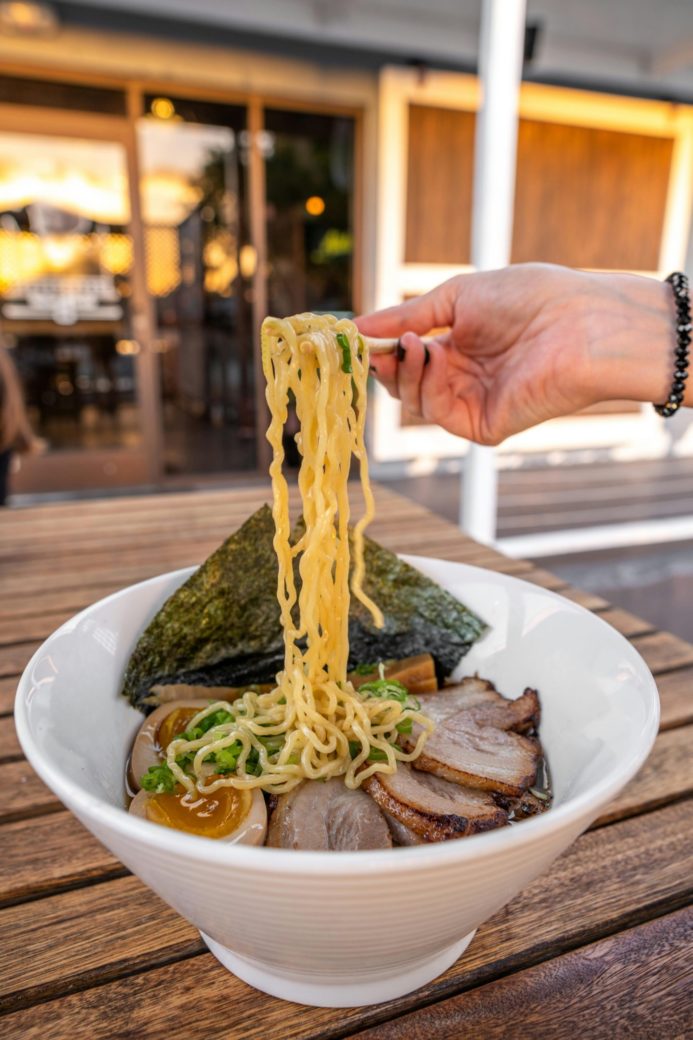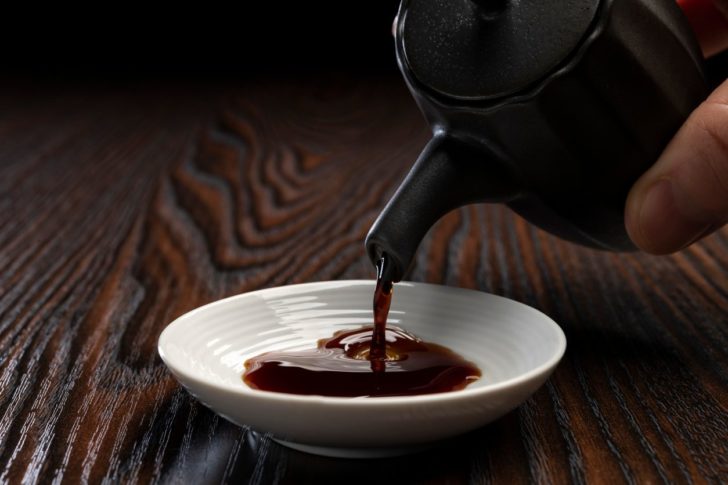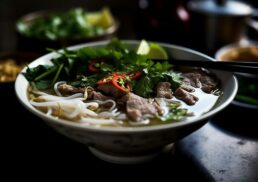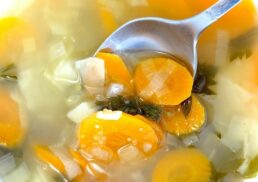Have you ever wondered what gives Japanese cuisine its unique and savory taste? The answer lies in shoyu sauce, a traditional Japanese soy sauce that has become an indispensable ingredient in many dishes. Its rich umami flavor and versatile applications make shoyu sauce a culinary staple not only in Japan but also around the world.
Table of Contents
Key Takeaways
Shoyu sauce has a long history in Japanese culinary culture and is made through the fermentation of soybeans, wheat, and koji mold.
Shoyu offers numerous health benefits such as odor-eliminating effects, bacteriostatic properties, flavor enhancement when combined with other ingredients.
There are several varieties of shoyu available for different uses. It should be stored correctly to preserve its unique flavor profile.
The Origin and History of Shoyu Sauce

Shoyu sauce, also known as Japanese soy sauce, has a rich history rooted in Japanese culinary culture, dating as far back as the Yayoi period, when people began salting cereal grains to preserve them. Yuasa, a town in Wakayama Prefecture, is held as the origin of Japan’s famous soy sauce. It is widely believed that it was here where this popular condiment was first invented and used. Over time, soy sauce production evolved, and by the Edo Period (1600-1868), umami-rich soy sauce became widely produced.
The term “shoyu” first appeared in historical records during the Azuchi-Momoyama Period (1573-1600), marking the beginning of Japanese style soy sauces. It is believed that the liquid residue at the bottom of Kinzanji miso production vats served as the prototype for soy sauce in Japan.
From its origins in Japan, shoyu sauce has grown into a global commodity, enjoyed for its distinct flavor and versatility in various dishes.
The Ingredients and Production Process of Shoyu
Shoyu soy sauce, also known as soy sauce shoyu, is primarily crafted from soybeans, wheat, and salt, ingredients that are staples in Japanese cuisine. The distinct flavor profile of shoyu sauce develops significantly during the fermentation process.
We will now examine the specific contributions of soybeans, wheat, and koji mold in the production process.
Soybeans
Soybeans are the primary ingredient in shoyu sauce, providing umami taste, and high protein content. Fermented soybeans must be rinsed, soaked overnight, drained, and then cooked before being used in the sauce.
The use of unprocessed soybeans and defatted soybeans can influence the nutritional profile of the sauce, which generally contains low calories and fat, and is a good source of protein.
Wheat
Wheat contributes to the sweet flavor and aroma of shoyu sauce, as well as providing 25% of the umami taste. The wheat used in shoyu sauce production is roasted and crushed, facilitating the enzymes of the koji mold to break it down during fermentation.
Wheat also plays a role in augmenting the savory taste and aroma of shoyu sauce, adding carbohydrates responsible for the depth and richness of the umami flavor, with wheat salt contributing to this unique profile.
Koji Mold and Fermentation
Koji mold, typically Aspergillus oryzae or Aspergillus sojae, is essential for fermenting soy sauce, as it breaks down soybean proteins into amino acids and wheat starches into glucose. The fermentation process takes a minimum of six months, although it may extend to three years or more.
High-quality koji mold is crucial for efficient enzyme generation and ensuring the preservation of the intense flavor and quality of the soy sauce.
Health Benefits of Shoyu Sauce

Beyond its culinary versatility, shoyu sauce brings along several health benefits. It has been observed that shoyu sauce possesses odor-eliminating effects, making it an effective ingredient in removing unpleasant raw-ingredient odors. Furthermore, shoyu sauce contains salt content and organic acids that exhibit bacteriostatic and bactericidal properties, inhibiting the proliferation of and eliminating E. coli bacteria.
Another advantage of shoyu sauce is its synergistic flavor enhancement when combined with other ingredients. For instance, the glutamic acid present in shoyu sauce interacts with the inosinic acid in katsuo-bushi (dried bonito shavings) to generate a greater level of umami taste. These health benefits make shoyu sauce an even more valuable addition to your pantry.
Comparing Shoyu with Other Soy Sauces
While shoyu sauce is an essential ingredient in Japanese cuisine, there are other soy sauce varieties that differ in terms of ingredients, production process, and flavor profile, such as Chinese and Indonesian soy sauces.
We will now probe into the differences between shoyu sauce and these other soy sauces to help you grasp their unique characteristics and uses.
Chinese Soy Sauce
Chinese soy sauce is chemically produced or partially brewed, with a sweeter aftertaste and thicker texture compared to shoyu sauce. It is generally made from a fermented paste of soybeans, roasted grain, brine, and Aspergillus oryzae, which is different from raw soy sauce.
Chinese soy sauce is available in two varieties: light soy sauce and dark soy sauce, both of which can be considered traditional soy sauce. The dark soy sauce often has a higher salt content than Japanese shoyu, due to the water and salt ratio used in its production.
Indonesian Soy Sauce
Kecap manis is a type of Indonesian soy sauce. It has a thick and syrupy consistency, and contains palm sugar, ginger, garlic and curry leaves. It has a salty and subtly sweet flavor, making it distinct from both shoyu and Chinese soy sauces.
Indonesian soy sauce is suitable for a variety of dishes, with its unique flavor profile complementing the spices and ingredients commonly used in Indonesian cuisine.
For more info, visit A Guide to Soy Sauce Varieties.
Popular Shoyu-Based Recipes and Dishes
Shoyu sauce is a versatile ingredient that can be used in a myriad of dishes, such as shoyu ramen, teriyaki chicken, and ponzu sauce. Its unique flavor profile allows it to enhance and complement the tastes of various ingredients, making it a staple in Japanese cuisine.
We will now give an overview of these popular shoyu-based dishes and their recipes.
Shoyu Ramen
Shoyu ramen is a type of Japanese noodle soup that features a broth made from:
soy sauce
sake
mirin
water
granulated sugar
basic clear chicken soup
The dish is renowned for its high umami flavors, with the shoyu sauce playing a pivotal role in enhancing the savory taste of the ramen broth.
Shoyu ramen can be customized with various toppings such as menma (fermented bamboo shoots), chashu (pork shoulder or belly slices), and dried sardines for the broth.
Teriyaki Chicken
Teriyaki chicken is a popular Japanese dish that features chicken glazed in a flavorful homemade sauce and cooked until juicy and tender. Shoyu sauce is a key ingredient in the teriyaki sauce, contributing to its glossy appearance and rich umami flavor.
The dish, perfect for stir fries, can be served with steamed rice and vegetables, making it a satisfying meal that showcases the versatility of shoyu sauce in various recipes.
Ponzu Sauce
Ponzu sauce is a tangy and citrusy Japanese sauce commonly used as a dipping sauce or dressing for various dishes, such as sashimi and grilled meats. It is typically made by combining citrus juice (such as yuzu or lemon) with soy sauce, mirin, and dashi.
Shoyu sauce is often used as the soy sauce base for ponzu sauce, adding a savory depth to its refreshing flavor profile.
Tips for Cooking with Shoyu Sauce
When using shoyu sauce in your cooking, keep in mind its unique flavor profile, the dish you’re preparing, and the intensity of taste you’re aiming for. Shoyu sauce can be used as a marinade, dipping sauce, or seasoning, making it a versatile ingredient in many recipes. To adjust the flavor intensity of shoyu sauce when cooking, consider incorporating a strong sour note from citrus fruit or vinegar, ingredients with intense umami flavors, tomato paste, or a few drops of fish sauce or Worcestershire sauce.
In addition to its versatility, shoyu sauce can also greatly enhance the flavors of various ingredients. For instance, when used in shoyu ramen, it helps to bring out the savory taste of the broth and the noodles. Similarly, in teriyaki chicken, it contributes to the dish’s glossy appearance and rich umami flavor.
Keep these tips in mind and make sure to follow them when cooking with shoyu sauce to create delicious and flavorful dishes.
How to Choose the Right Shoyu Sauce for Your Needs
Choosing the right shoyu sauce depends on personal preferences and the specific dish being prepared. There are several options available, such as koikuchi, usukuchi, and tamari shoyu, each offering unique characteristics and uses.
We will now explore these different types of shoyu sauce and provide guidance on selecting the one that best fits your needs.
Koikuchi Shoyu
Koikuchi shoyu is the most common type in Japan, comprising 80% of all soy sauces available. It is characterized by its elegant reddish-brown color and versatility, as it can be used in a variety of dishes.
Koikuchi shoyu has a salty and deep umami flavor profile and a rich fragrance, making it a great option for those seeking a traditional shoyu sauce experience.
Usukuchi Shoyu
Usukuchi shoyu is lighter in color and saltier than koikuchi shoyu, making it ideal for dishes where color and dashi stock are important. It is best suited for dishes such as:
white fish
chicken
Kyoto-style cooking
soups
simmered dishes
as a seasoning for sashimi and sushi.
Usukuchi shoyu is a great choice for dishes that require a delicate flavor
Tamari Shoyu
Tamari shoyu is:
Made with little to no wheat, making it suitable for gluten-free diets
Offers a richer, more aromatic flavor
Has a thicker consistency
An excellent option for those seeking a unique taste or a gluten-free alternative.
Tamari soy sauce is particularly well-suited for use as a dipping sauce and for dishes that require a more intense and robust flavor, such as grilled meats and sushi rolls.
Storing and Preserving Shoyu Sauce
Proper precautions are required to store and preserve shoyu sauce, in order to maintain its flavor and extend its shelf life. Here are some tips:
Seal the bottle to avoid contamination
Store it in the fridge to prolong its flavor and shelf life
Shoyu sauce can last up to two years when hermetically sealed
However, it should be consumed within three months of opening.
It’s essential to be aware of potential health risks and signs of spoilage when using shoyu sauce. For instance, mold can develop in shoyu sauce, and the sauce should be discarded if mold is present.
Proper storage and preservation of shoyu sauce will allow you to continually experience its unique flavor and health benefits in your beloved dishes.
Summary
In conclusion, shoyu sauce is a versatile and flavorful ingredient that has a rich history rooted in Japanese culinary culture. From its origins in the Yayoi period to its present-day global popularity, shoyu sauce continues to enhance dishes with its unique umami taste and aroma. Whether you’re using it in traditional Japanese dishes like shoyu ramen and teriyaki chicken or experimenting with new recipes, shoyu sauce is an indispensable addition to your pantry.
Frequently Asked Questions
What’s the difference between soy sauce and shoyu?
Shoyu has a sweeter, more complex flavor than soy sauce due to its longer fermentation process, making it great for dipping sauces, sushi, and as a base for other condiments. Soy sauce, on the other hand, has a less nuanced taste and is more often used as a flavoring in stir-fries and marinades.
What does shoyu taste like?
Shoyu has high umami flavors with a tangy and strong taste, making it a perfect condiment for ramen.
Does shoyu and soy sauce taste the same?
Although Shoyu and soy sauce are both commonly used in Asian cuisine, they have different flavor profiles due to their production methods. Shoyu has a sweeter, more complex taste, making it better suited for sauces and marinades than regular soy sauce.
What is shoyu soy sauce vs Tamari?
Shoyu is a Japanese-style soy sauce made with roughly 50% soybeans and 50% wheat, while Tamari is wheat-free and is made by drawing off the liquid content of soybean miso. Shoyu is typically used as an all-purpose cooking soy sauce, while Tamari is often preferred for people who are allergic to wheat due to its slightly stronger taste and slower flavouring ability.
How long does shoyu sauce last?
Shoyu sauce can last up to two years when hermetically sealed, however it should be consumed within three months of opening for optimum quality.









